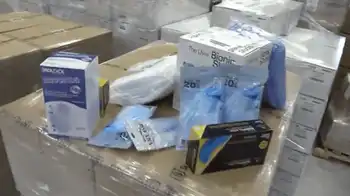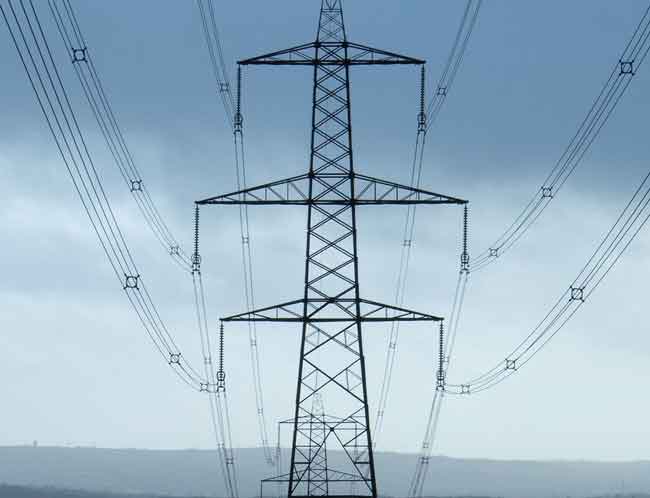Study Ranks Bush Plan to Cut Air Pollution as Weakest of 3
At the invitation of the environmental coalition Clear the Air, the international research firm Abt Associates, which often conducts studies for the Environmental Protection Agency, used the same methodology in assessing all three. It found that the administration's plan, called the Clear Skies Act, would save as many as 14,000 lives but that the other bills would save more - 16,000 in one case and 22,000 in the other.
The findings, included in a report, "Dirty Air, Dirty Power," were immediately attacked by industry groups as a "repackaged" argument that focused on only one source of emissions. The administration's chief environmental policy adviser echoed the criticism, saying that the administration plan provided benefits as part of an overall strategy to meet air quality standards that were more stringent than ever.
"You can't just look at power plants alone to understand the program," said James L. Connaughton, chairman of the White House Council on Environmental Quality. "You could say Clear Skies doesn't go as far as the other bills, but Clear Skies combined with our new standards on diesel goes further than both."
But officials from Clear the Air said the report provided evidence that the administration's approach to curbing emissions from power plants did not do enough soon enough, and in the process, saved power companies from spending huge sums on technologies that would reduce emissions.
They predicted that the analysis could become part of the presidential campaign. The report said that under current policies, nearly 24,000 people died each year as a result of power plant emissions, with the largest numbers in three closely contested states, Pennsylvania, Ohio and Florida.
"The administration is presenting as 'progress' proposals that delay action on air pollution, weaken health standards and undermine enforcement of the law," Angela Ledford, director of Clear the Air, wrote in the foreword to the report, adding, "If there was ever a time for people to stand up and demand action, it is now."
None of the proposed measures has generated much support in Congress, a reflection of two political realities.
The first is the continuing conflict over how much power companies should be held accountable for emissions, pitting groups like Clear the Air against industry leaders who say that emission levels have steadily declined under the Clean Air Act and that expensive technological improvements needed to reduce emissions are unnecessary and would drive up energy costs.
"It's the environmentalists' repackaging the same old arguments," said Scott Segal, director of the Electric Reliability Coordinating Council, a trade organization, responding to the report. "Every once in a while they get nervous that air emissions has fallen off the radar screen so they repackage what they have previously stated."
The second political reality is the election campaign, which has all but halted progress on major legislation this year. President Bush's initiative has received no more favorable reception than the more aggressive of the alternative bills which is co-sponsored by Mr. Bush's Democratic opponent, Senator John Kerry.
Still, the next reauthorization of the Clean Air Act is overdue, and if it wins serious Congressional consideration next year, lawmakers will most likely take into account the differences in the plans before them.
Officials from Clear the Air said the Abt analysis was the first to offer a direct comparison of the plans, making projections on the number of lives saved, illnesses prevented and health care benefits. In general, it found that the administration's plan would provide the fewest benefits, eliminating 58 percent of deaths related to power plant emissions by 2020, the first year all the plans would be fully implemented, and the Jeffords bill the most, eliminating nearly 90 percent.
The report criticized Mr. Bush as backing off a campaign pledge in 2000 to establish reduction targets for four big pollutants: sulfur dioxide, nitrogen oxide, mercury and carbon dioxide. The administration proposal addresses all but carbon dioxide, while the Jeffords bill, as well as a less aggressive measure proposed by Senator Thomas R. Carper, Democrat of Delaware, and two Republican senators, Judd Gregg of New Hampshire and Lincoln Chafee of Rhode Island, provide for limits on all four pollutants.
"Rather than move forward on legislation to make our air cleaner, we have spent the last three and a half years trying to prevent the Bush administration from weakening clean air standards," Mr. Jeffords said in a written statement. Discussing the report after its release, Ms. Ledford acknowledged that Congressional action was probably far off. But, she said, "It's important to remind people about the issue, that they can do something about it."
Related News

Biggest in Canada: Bruce Power doubles PPE donation
WINGHAM, ONT. - The world’s largest nuclear plant, just made Canada’s largest donation of personal protective equipment (PPE).
Bruce Power is doubling it’s initial donation of 600,000 masks, gloves and gowns for front-line health workers, to 1.2 million pieces of PPE.
The company, which operates the Bruce Nuclear station near Kincardine, Ont. plans to have the equipment in the hands of hospitals, long-term care homes and first responders by the end of April.
It’s not the only thing Bruce Power is doing to help out Ontario during the COVID-19 pandemic:
Bruce Power has donated $300,000 to 37 food banks in Midwestern Ontario.
- They’re also working…





